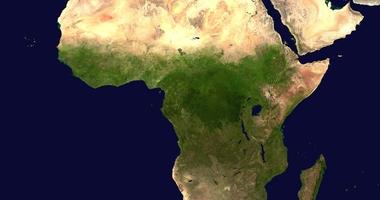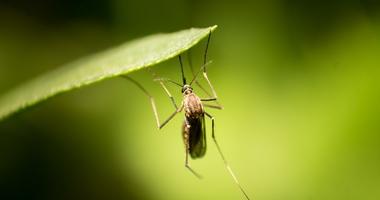
When It Comes to Climate Education, It’s Important to Start Early
Kids today will face the challenges of a warming world head on. But in states across the country, climate change is entirely absent from elementary and middle school education standards, and in others, it’s barely a footnote.
“Climate change is set to transform where students can live and what jobs they’ll do as adults. And yet, despite being one of the most important issues for young people, it appears only minimally in many state middle school science standards nationwide,” the New York Times writes. “Florida does not include the topic and Texas dedicates three bullet points to climate change in its 27 pages of standards. More than 40 states have adopted standards that include just one explicit reference to climate change.”
Indeed, a survey by the National Center for Science Education found that about half of middle school science teachers either don’t cover the subject at all or spend less than two hours a year on it.
Two hours a year. On the most consequential issue these young people will ever face.
When climate change is taught at all, it’s often just skimmed over, presented as a theory rather than a fact, or as an ongoing scientific debate with two equal and opposing sides. Without educational standards on the topic in many places, the content of the lessons that are happening can vary wildly.
That’s not what young people need. They need climate science. And parents need to know what they’re up against in making sure they get it.
To be sure, discussing the climate crisis with children can be a major challenge. It is frightening and complicated. But discussing the greenhouse effect and the ways it’s changing our global climate is necessary.
But getting climate added to education standards has been an uphill battle – one made harder by Big Polluters intent on keeping it off the table. The Times reports that in Texas, a lawyer for Shell “succeeded in cutting the requirement that eighth graders learn how to ‘describe efforts to mitigate climate change.’”
So it turns out, one of the biggest challenges to properly educating our youth is fighting the efforts of climate deniers to exclude climate science from textbooks and lesson plans. They want to keep kids in the dark about climate change or present it as something it’s not: a theory rather than a fact.
Yet, there’s no way around it: Youth have a right to understand the realities of the climate crisis and what it means for them. And there’s nowhere better to learn that than in a science classroom.
Climate change can be an incredibly complex, multi-faceted topic. But the basic truths of the crisis – that the science overwhelmingly demonstrates that modern global warming is a man-made phenomenon, for example — are readily accessible to everyone. Including young people.
And parents agree: An NPR poll found that over 80% of US parents support teaching about the climate crisis.
Teaching standards for young learners should lay a foundation for future learning by engaging in straightforward-but-age-appropriate discussions about some important climate fundamentals. After all, what is school if not a place to gain the necessities to live a successful life in the wider world.
And at this point, that’s impossible without including robust lessons on climate.
You Can Make A Difference
Middle school aged children are ready to hear how climate change is standing in the way of a healthy tomorrow for all of us – and also that we have the practical solutions today to stop it. We can create a healthy, sustainable, and prosperous future by making a planet-wide shift from dirty fossil fuels to clean, reliable, and affordable clean energy.
There, that wasn’t so hard. Now, it’s time to sing that gospel to school boards across the country, so it can be added to curriculums everywhere.
Young people have a right to understand the realities of the climate crisis and what it means for them – and as a parent, guardian, and/or caregiver, you have a responsibility to speak up about it. Educational standards are revisited regularly; there’s no reason why climate change cannot be brought to the forefront of science curricula from sea to shining sea with each new revision.
“Parents can play a strong role, climate education advocates say, in facilitating the adoption of those standards and development of robust curricula in their states and states across the country,” according to Yale Climate Connections. “Supportive parents also can stand up for teachers who may face political pressures or resistance from parents, the community, and even other teachers and administration, within the school.”
What You Can Do
We can’t let powerful interests deprive our children of the knowledge and skills they need to navigate a warming world and help build a better, more sustainable future. We should teach young people everything we now know about this crisis – beginning with the fact that it’s manmade, serious, and very solvable.
Rigorous, fact-based climate science instruction should be the norm in every K–12 classroom. Here are a few ways you can get it:
- Contact Your Representatives
Contacting your elected leaders’ offices is a useful way to communicate your opinions on the climate crisis. Although it’s unlikely you’ll speak directly to the official, their staff tracks the number of calls they receive on various topics, and most legislators do pay attention to communications from their constituents.
In Idaho a few years ago, this ended up being the winning strategy.
“[The] deletion of climate standards was a catalyst for more than 1,000 public comments and an overflowing public hearing at the state capitol in Boise,” according to Yale Climate Connections.
The outcome? State legislators ultimately restored – albeit, admittedly, in a weakened state – science standards that included sections on human-caused climate change.
- Write a Letter to the Editor
The opinions section of a publication is one of the most valuable places to discuss the climate crisis. By writing a letter to the editor and sharing your belief that climate science belongs in the classroom, your insights on the topic will be out there for hundreds (perhaps thousands) of people to read. It’s an incredible tool for reaching and educating the public. And many influencers – including school board members, area businesses, and local representatives – pay attention to opinion pieces, which function as a direct line to local voices.
Keep it short and sweet and make it personal, explaining why taking climate education is important to you specifically.
At the end of the day, an informed young child is an aware teenager – one ready to create change. We are doing our young people a great disservice by not standing up for their right to learn the truth about the most pressing issue of our time.
Let’s change that.




